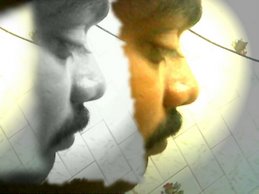


Raja Raja Chola during his rule built the Tanjore Brihadeeswarar temple. Otherwise called 'Big Temple' (Periya Koil) the temple was built by the King on a sprawling piece of land. The greatness of this temple is marked by the enormous Lingam - the 'Brihadeeswarar' which is the prime deity of the shrineAnother remarkable feature is the great Nandhi. The Nandhi that figures at the entrance is also immense in size (a popular belief is that it is growing by the day). The Nandhi at this temple is particularly, splendid in the shape and symmetry that it shows. Periya Nayaki is the Goddess deity here. The Gopuram tower of the temple is 216 feet high and is topped by a block of granite 25 feet square and 80 tons in weight.This stone was hauled four miles over an inclined plane and put on top of the tower. The dome carved from a single stone weighing 80 tons, is surrounded by 250 arcades, each containing a lingam.



.jpg)
.jpg)
.jpg)

